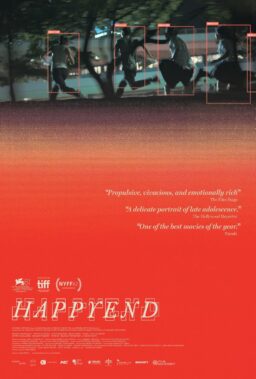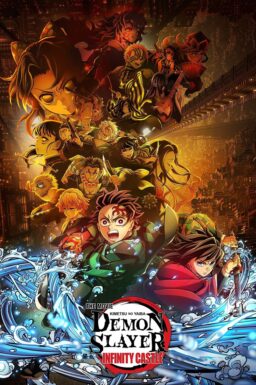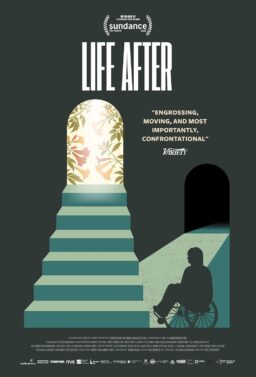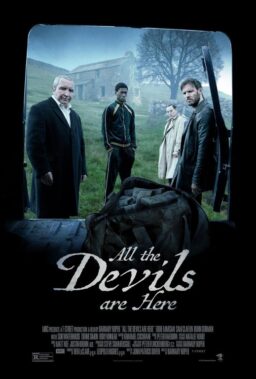Sometimes after coming out of yet another lackluster movie—the
kind made without any sort of personal touch or unique vision—I find myself
thinking about what I would do if I wound up in the highest corridors of power
in the film industry with the ability to make anything that I wanted. Although
I have come up with any number of such dream projects in my head over the years,
one of my favorites was the notion to bring back controversial filmmaker
Michael Cimino, the man who became the toast of Hollywood with only his second
directorial effort, the Vietnam epic “The Deer Hunter” (1978) and its ultimate
pariah with his third, the Western epic “Heaven’s Gate” (1980), and let him do
whatever he wanted. Sure, the results might have outraged or annoyed certain
portions of the moviegoing audience, and the financiers might have had
coronaries at the thought of letting the man behind one of the industry’s most
infamous (and infamously expensive) box-office flops indulge himself once again,
but whatever this dream project might have been, it certainly would have been
more interesting than the vast majority of what has been passing for filmed
entertainment in recent years.
Alas, even if the machinations to give me that sort of power were
to somehow occur, that dream officially ended with the announcement of Cimino’s
death today at the age of 77 by Thierry Fremaux, the director of the Cannes
Film Festival. Since it has been 20 years since the release of his last feature
film and nearly a decade since his last directorial effort, a contribution to
2007 anthology feature “To Each His Own Cinema,” the impact of his loss may not
be immediately felt, but for those who equate his name with the impact of his
admittedly brief artistic output (a mere seven features) rather than the
circumstances of his downfall in the industry, his passing should inspire
reflection on what proved to be one of the most audacious careers in modern
cinema as well as a bit of ruing over the tantalizing projects that wound up
never getting made along the way.
Born in New York on February 3, 1939—though some have questioned
the veracity of this date, along with other aspects of the personal life that
he tended to keep shrouded in as much secrecy as possible—Cimino attended Michigan
State University before graduating from Yale in 1961 and receiving his MFA from
there two years later for painting. After that, he went into the advertising
business and made successful commercials for companies like Pepsi, United
Airlines and Kool cigarettes—considering how he would be criticized in later
years for the elongated nature of some of his films, it is ironic that he would
first achieve success in a medium in which economy of narrative was so
important. In 1971, he went to Los Angeles to break into films and began
getting work as a screenwriter. He first served as a co-writer of the
ecologically-oriented science-fiction hit “Silent Running” (1972) and later did
a rewrite on John Milius’ screenplay for “Magnum Force” (1973), the first
sequel to the enormously popular Clint Eastwood vehicle “Dirty Harry.”
That film might not have been a profound or powerful work, but it
made a lot of money, and, more importantly, those screenplay contributions
impressed Eastwood so much that he agreed to star in what would be Cimino’s
directorial debut, the action-comedy “Thunderbolt & Lightfoot” (1974). In
that film, Eastwood played a legendary bank robber who winds up joining forces
with a goofy auto thief (Jeff Bridges) and his former partners (Geoffrey Lewis
and George Kennedy), who think that he double-crossed him. Combining violent
action with oddball comedy and culminating with an unexpectedly downbeat
ending, the film never quite caught on with audiences—those who might have
liked the humor stayed away because of the violence and vice versa—but those
who did see it tended to like what they saw—Bridges received an Oscar
nomination for Best Supporting Actor while critics singled out Cimino, who also
wrote the screenplay, as someone to look out for in the future.

Cimino was courted by producer Michael Deeley to do some work on
“The Man Who Came to Play,” an unproduced screenplay that he owned dealing with
people playing Russian roulette in Las Vegas. There are many stories about how
this piece eventually became the film that we know as “The Deer Hunter”—Cimino
claimed to have rewritten the entire thing himself while credited co-writer
Deric Washburn (who collaborated with Cimino on “Silent Running”) said that he
did much of the writing only to be unceremoniously fired by Cimino. Whoever did
what (the final credits gave Washburn sole screenplay credit and Cimino story
credit along with Washburn and the two authors of the original “The Man Who
Came to Play”), the results were strong enough to get Cimino the go-ahead to
make the film and to bring in a cast that included Robert De Niro, Christopher
Walken, John Cazale and the virtually unknown Meryl Streep. Despite the film
being a risky project—Vietnam films were considered to be box-office poison
back then—Cimino indulged in his penchant for realism at all costs (such as
filming the harrowing Vietnam sequences in Thailand instead of in a studio),
and by the time shooting wrapped up, he had gone over schedule and nearly
doubled the budget in amassing over 600,000 feet of printed film that would
finally boil down to a three-hour film that Universal Studios was
understandably nervous about distributing. Astonishingly, the gamble paid off
as the film went on to become a surprise commercial hit and won five Oscars,
including two for Cimino for Best Picture and Director.
It makes some perverse sense, I suppose, that Cimino’s most
popular film would turn out to be the one that I find the most difficult to
defend. As many critics of the film (and there were many, including Jane Fonda,
whose own Vietnam-related film, “Coming Home” was coming out at the same time)
remarked at the time, the depiction of the Vietnamese as little more than
subhuman savages straight out of an old propaganda movie was somewhat troubling
and there was no proof that there was a single documented case of Russian roulette—the
game that makes up the film’s central metaphor—being played during the Vietnam
War, let alone at the level depicted by Cimino, who rebutted by stating that
his movie was not necessarily meant to be literally accurate. Beyond those
controversies, there is the inescapable fact that the film is more than a
little self-indulgent at times—the much-discussed opening wedding sequence goes
on for so long (almost an hour of screen time) that even the most patient of
viewers may find themselves wishing that they were at a real wedding instead.
And yet, while I seriously dislike this particular film, I cannot deny that
there is a special power to it—it has the kind of epic and
novelistic sweep that few American films other than the “Godfather” movies and
“Nashville” were attempting at the time and Cimino proved to be equally good at
getting performances out of his actors (including Walken, who would win the Best Supporting Actor Oscar for his haunted portrayal of the one who survived Vietnam
physically but not mentally) as he was in creating big and showy moments that
simply overwhelmed viewers.

At that point, Cimino was in the rarefied position in which he
could essentially do anything that he wanted as his next project and decided to
use that to take a screenplay that he wrote back in 1971, a historical Western
titled “The Johnson County War.” Loosely based on the 1890’s skirmish of the
same name between European settlers and the American land barons driven to
violent measures to claim their lands for themselves, the project was shelved
back in the day for not being able to attract big stars, but at this point
Cimino was the star, and he was able to convince United Artists, a studio that
was reeling from the recent defection of five top executives and needing to
demonstrate to the industry that it was still a player, to give him a cast
including Kris Kristofferson, Isabelle Huppert (then a complete unknown to
American audiences) and Walken, an initial budget of $11.5 million and complete
control over everything to bring it to the screen under the new title of
“Heaven’s Gate.” What happened next is now Hollywood legend and if you do not
already know the story, you should read “Final Cut,” a blow-by-blow account of
its production and ultimate reception by then-studio executive Steven Bach that
pulls few punches in showing how the combination of an out-of-control
production and a corporate mindset that had no real idea of how to deal with
artistic types could lead to the kind of disaster that occurred here. Suffice
it to say, the film was such an enormous critical and commercial failure that
it was pulled from release after a week and recut from nearly four hours to two
and a half, and when that shorter version failed to inspire any interest, certainly
not enough to recoup the then-record-breaking $36 million price tag, the studio
itself went actually went under and was eventually bought up by MGM.
As I said, read “Final Cut,” because while it does have an
undeniably anti-Cimino perspective, it remains one of the most fascinating and
compulsive readable books about the eternal struggle in Hollywood between art
and commerce. At the same time, you should also watch “Heaven’s Gate” as well
because, despite all the rumors and scandals and reports of megalomania, not to
mention the massive overruns regarding the schedule and the budget directly
tied into Cimino’s always-expanding artistic vision, the final film is, quite
simply, a masterpiece. Cimino may have been vilified for his profligate ways but
one cannot say that the money isn’t up there on the screen—shooting on location
in Montana and Idaho and inspired by period photographs, Cimino,
cinematographer Vilmos Zsigmond and the army of technicians deployed created a
film that, with the possible exception of “McCabe & Mrs. Miller,” has an
authenticity to it that puts most other movies of its genre to shame. It is
also a film that is as grandiose in its dramatic ambitions as it is in its
purely cinematic ones. Cimino presents a view of a cherished part of the
collective American experience that is distinctly at odds with how the
textbooks have chosen to depict it and, lest anyone think that it is merely a
dusty bit of history with nothing to say, the angry story it tells about the
tensions between the haves and have-nots boiling over into violence and
intolerance arguably feels even more timely and relevant today than it did when
it was first released. The film also contains moments of such sheer beauty that they practically take your breath away—there is one extended sequence featuring
a group of immigrants celebrating at a roller rink that runs on for about 10
minutes or so and while it adds little to the drama, it is so formally
ravishing that I cannot imagine it existing without it.

Although “Heaven’s Gate” would undergo a much-deserved critical
rehabilitation in subsequent years, it made Cimino persona non grata in the
industry. And while his name would occasionally crop up in conjunction with
projects from time to time—including unproduced biopics on Frank Costello and
Legs Diamond and such eventually realized (by others) titles as “The Pope of
Greenwich Village” and, inexplicably, “Footloose” (the mind reels)—it would be
five years before Cimino returned to the director’s chair with “Year of the
Dragon,” a crime drama that was adapted from the Robert Daley novel by Cimino
and Oliver Stone. In it, Mickey Rourke plays Stanley White, a highly decorated
police captain who makes it his personal mission to break up organized crime in
New York’s Chinatown district, specifically the organization belonging to the
outwardly charming and inwardly ruthless triad leader Joey Tai (John Lone). The
battle between the two of them escalates rapidly with many people caught in the
crossfire (including both White’s wife and his news reporter mistress) until
the startling last scene in which the two, having pretty much destroyed everything
they had, end up charging at each other on a dark railroad bridge while wildly
firing their guns in a final gasp of misguided machismo.
Although Cimino brought the film in on time and on budget, much
of that possible goodwill was overwhelmed by charges that the film’s depiction
of the Asian community was racist, eventually leading to a disclaimer being
added to the beginning of the film. Though the film did get some decent
reviews, not even the controversy was enough to bring people into the theaters
and it died quickly. Cimino manages an effective balance between the
over-the-top action beats (there is a restaurant shootout so elaborate that if
you are watching it on DVD, you immediately want to watch it again the moment
it concludes) and the quieter moments showing life in Chinatown. And Rourke
goes so all-out in his performance that you cannot help but find his character
intriguing despite his general loathsomeness.
Alas, that would prove to be Cimino’s last great directorial
statement. “The Sicilian” (1987) was an adaptation of the Mario Puzo novel
about famed Sicilian bandit Salvatore Giuliano and his efforts to liberate his
homeland and make it a part of America in the 1950s. It ended in a dustup with
producers over the running time that led to it being recut by others before
bombing in theaters. “Desperate Hours” (1990) was a remake of the 1955 Humphrey
Bogart crime film of the same name that featured Mickey Rourke and Anthony
Hopkins that just simply did not come together, though Rourke’s performance
does offer up a few live-wire moments. “Sunchaser” (1996), a sort-of road movie
in which a 16-year-old juvenile offender (Jon Seda) dying of abdominal cancer
kidnaps his oncologist (Woody Harrelson) and forces him to drive them to a
sacred Navajo mountain lake in Arizona, had moments of real style that were
unfortunately linked to a clunky screenplay and the film went almost directly
to video.
And then, nothing. Although there were occasional rumors about
film and even stranger ones about his personal life, there were no more films
from him. He moved to France and wrote a couple of books, “Big Jane” (2001) and
“Conversations en miroir” (2003). His adopted country celebrated his work by
awarding him the Chevalier des Arts et des Lettres and the Prix Litteraire
Deauville in 2001. Meanwhile, despite the slowly growing reappraisal of
“Heaven’s Gate” in America, he was never able to put another project together.
From a financial standpoint, that was no doubt prudent but considering how many
terrible and financially disastrous films that have come out in recent years by
people who are nevertheless allowed to continue working in the industry, the
refusal to give him another chance is a little sad. However, think of what
might have resulted if someone had taken the risk and given him another
chance—after all, no one ever claimed that he didn’t have talent. (If he
didn’t, he would have been content to play it safe throughout his career in
order to keep on working.) With the passing of Michael Cimino, an era has truly
come to an end. Film would not be the same without him.












